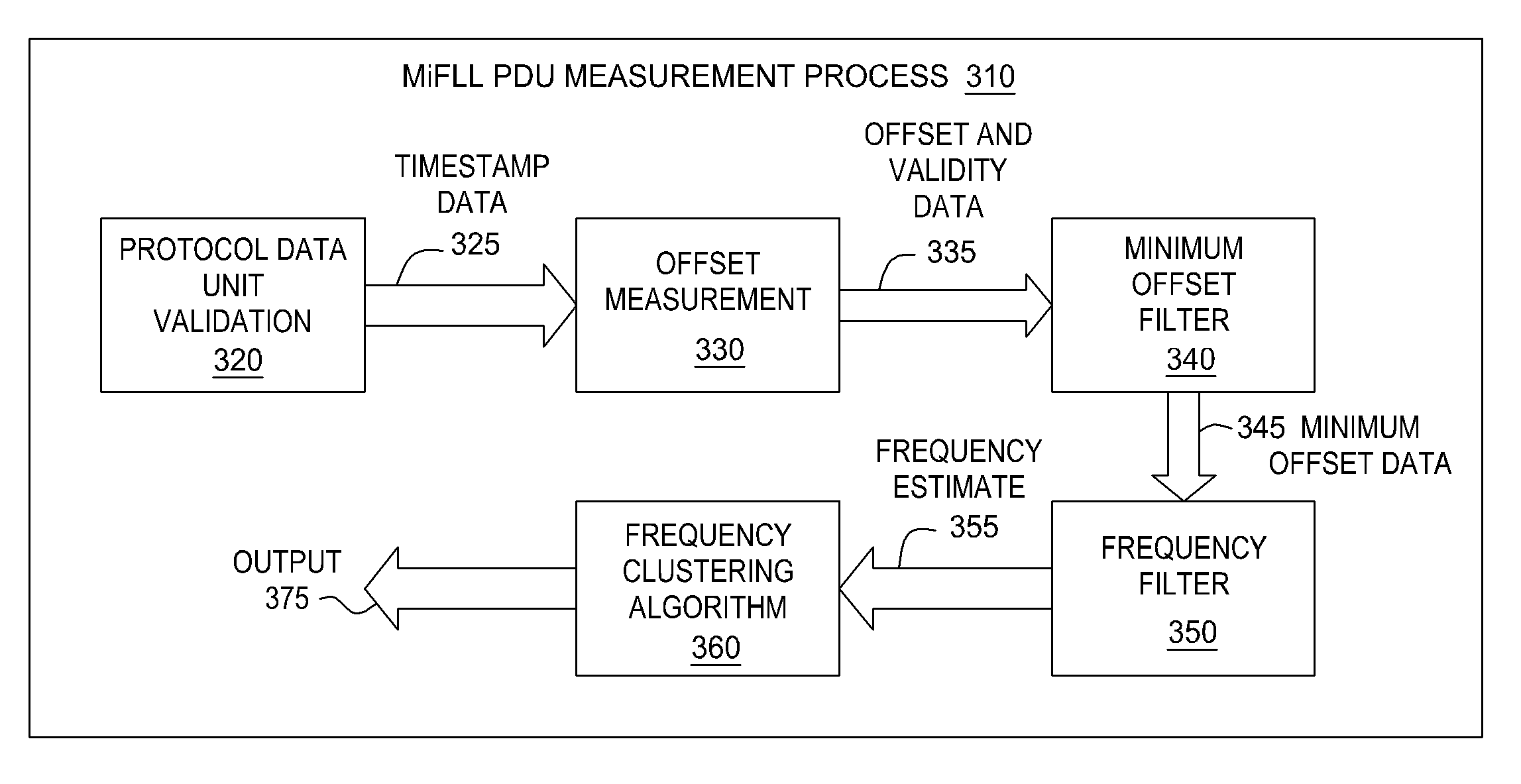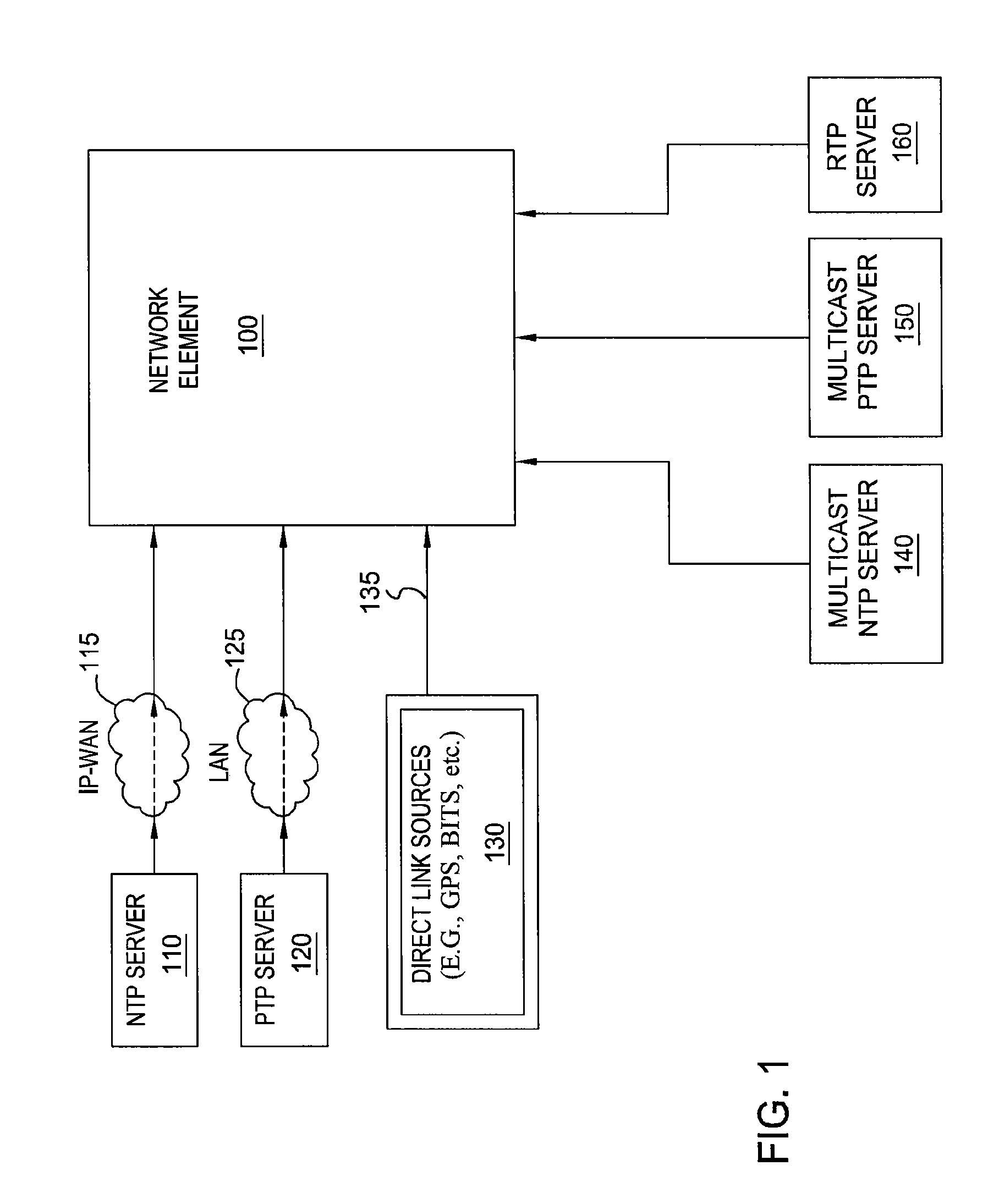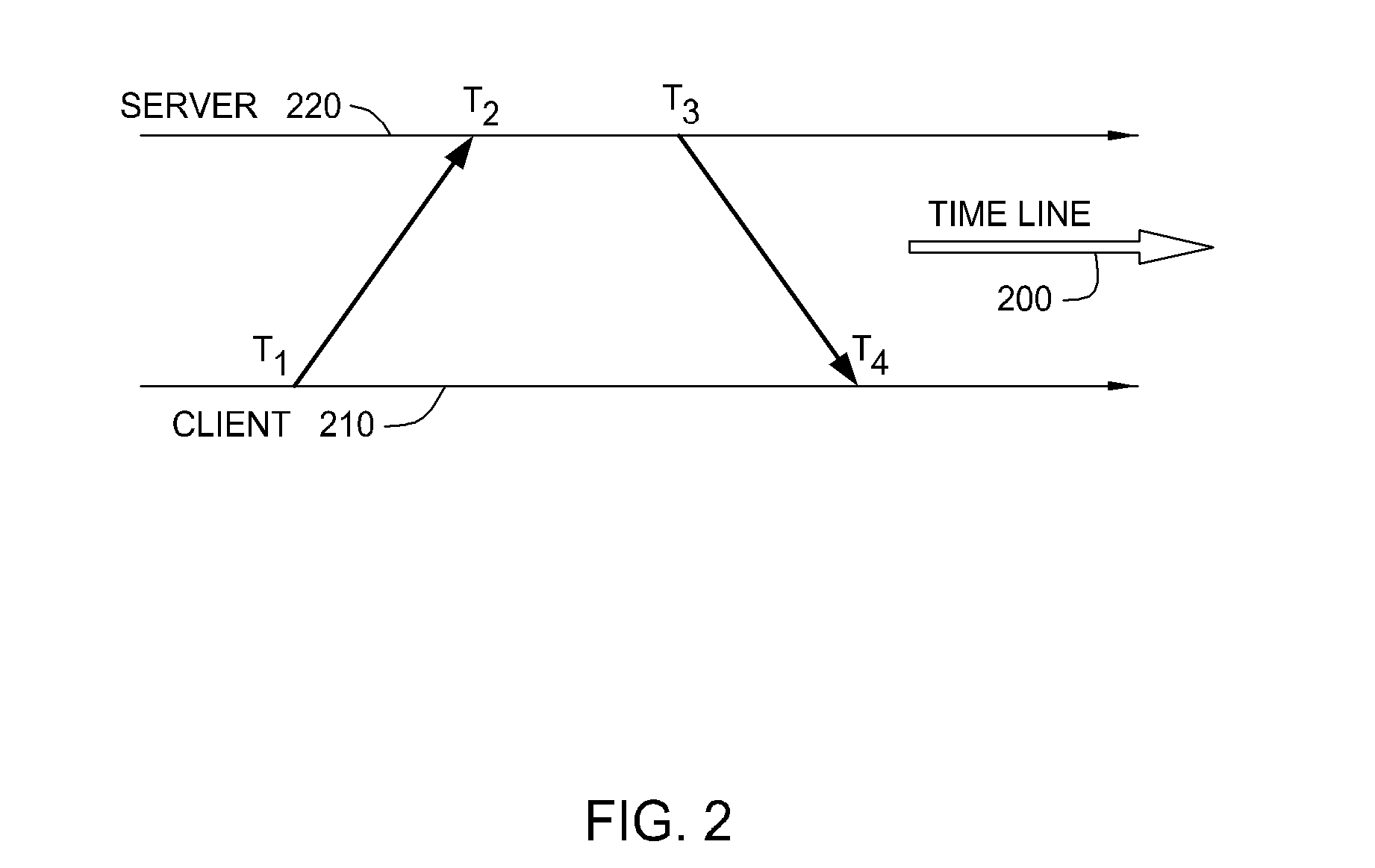Enhanced clock control in packet networks
a packet network and clock control technology, applied in the field of enhanced clock control in packet network, can solve the problems of inability to maintain the clock, and inability to meet the telecommunications standard in the intermediate and long term, so as to improve the stability of the client clock, reduce the cost, and improve the effect of the clock stability
- Summary
- Abstract
- Description
- Claims
- Application Information
AI Technical Summary
Benefits of technology
Problems solved by technology
Method used
Image
Examples
Embodiment Construction
[0020]The present invention improves upon the teachings of U.S. Pat. No. 5,751,777 and U.S. Pat. No. 5,943,381, the entire contents of both of which are incorporated herein by reference for all purposes.
[0021]FIG. 2 illustrates the notions of time stamps, according to one embodiment of the present invention. Both the primary tier and the secondary tier sources utilize variants of a time stamping process illustrated in FIG. 2. As shown, a time measurement process may involve four time stamps along a timeline 200, which are defined as follows:
T1 is a time stamp representing the best estimate of the transmit origination epoch of a protocol data unit (PDU) originating from the clock of a client 210,
T2 is a time stamp representing the best estimate of the receive termination epoch of a PDU terminating at the clock of a server 220,
T3 is a time stamp representing the best estimate of the transmit origination epoch of a PDU originating from the clock of the server 220, and
T4 is a time stamp...
PUM
 Login to View More
Login to View More Abstract
Description
Claims
Application Information
 Login to View More
Login to View More - R&D
- Intellectual Property
- Life Sciences
- Materials
- Tech Scout
- Unparalleled Data Quality
- Higher Quality Content
- 60% Fewer Hallucinations
Browse by: Latest US Patents, China's latest patents, Technical Efficacy Thesaurus, Application Domain, Technology Topic, Popular Technical Reports.
© 2025 PatSnap. All rights reserved.Legal|Privacy policy|Modern Slavery Act Transparency Statement|Sitemap|About US| Contact US: help@patsnap.com



